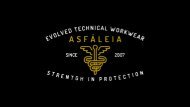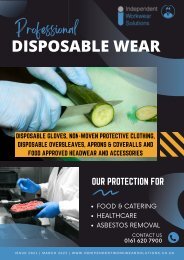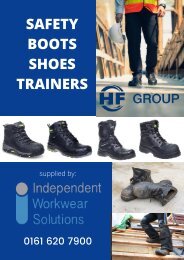Independent Workwear Solutions Ltd
March 2020 Magazine
March 2020 Magazine
Create successful ePaper yourself
Turn your PDF publications into a flip-book with our unique Google optimized e-Paper software.
Workwear Rental - Laundry - Dust Mats - Washroom Hygiene - Branding
"Electric arc is a complex phenomenon"
Arc flash incidents are one of the most deadly risks on the
worksite, with arc flashes able to kill at distances of as little as
10 feet. More than three quarters of those questioned in an arc
flash mitigation survey said reducing the risk of arc flash was an
essential consideration, yet only 67% of respondents stated
they had completed an analysis.
Why?
Perhaps a part of the problem is that there’s really no such thing
as an ‘arc flash analysis’. Instead, this term has been created by
combining ‘incident energy analysis’ and ‘arc flash risk
assessment’… so which one should you be focusing on? Both.
Incident energy analysis should be an integral part of an arc
flash risk assessment, and conducting this assessment is
something that all businesses working onsite with electrical
equipment should be prioritising. Under the European Council
Directive 89/391/EEC, all employers have a legal responsibility
to assess and identify the level of risk at work.
So how do you conduct an arc flash risk assessment?
There are two stages. The first stage covers the first 3 aspects
of the Health & Safety Executive’s 5-step plan for undertaking a
workplace risk assessment: identifying hazards, determining
who is at risk and how, and considering the most effective
precautions. This stage involves examining your electrical
equipment type and voltage to generate a minimum arc rating in
calories/cm2 and the overall arc flash boundary.
Conducting an arc flash risk assessment and calculating incident
energy can take time, yet it’s one of the most effective ways to
minimise risk and ensure that all workers fully understand the type
of personal protective equipment they should be wearing onsite.
TEC WEAR for
HIGH RISK
EMPLOYEES
ARC Protection
HI Visibility
Chemical
Splash
(Limited)
Flame
Retardant
Flame
Retardent
Anti-Static
Limited
Chemical
Splash
Molten Metal
Flame
Retardant
Under
Garments
Page37


















